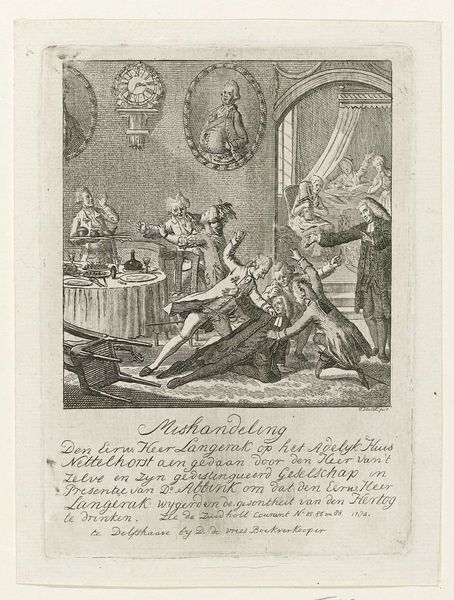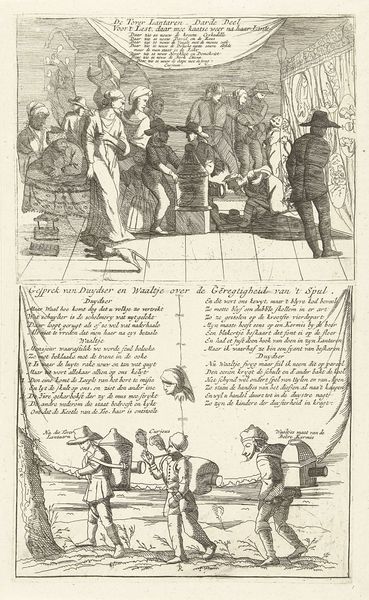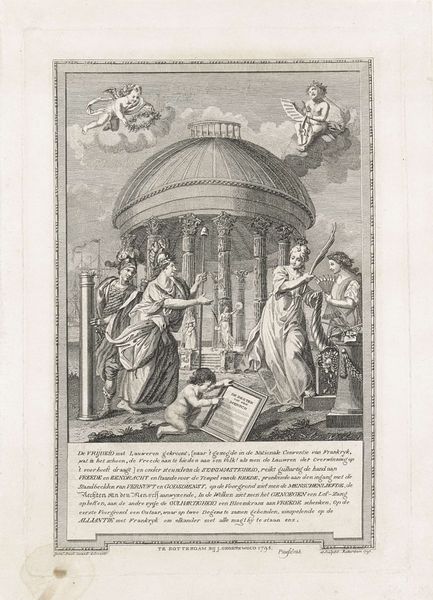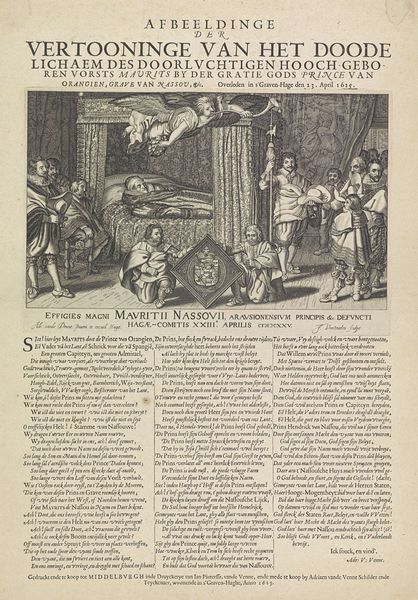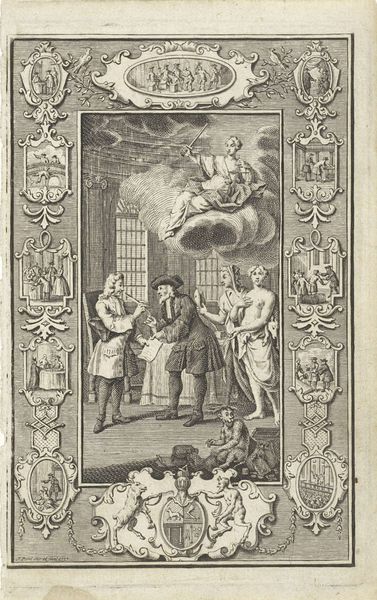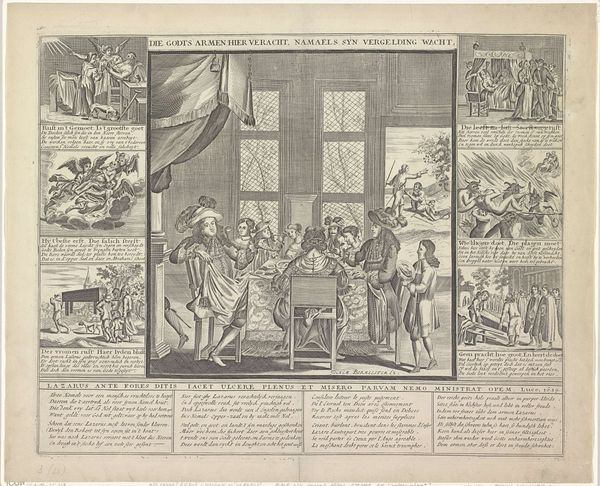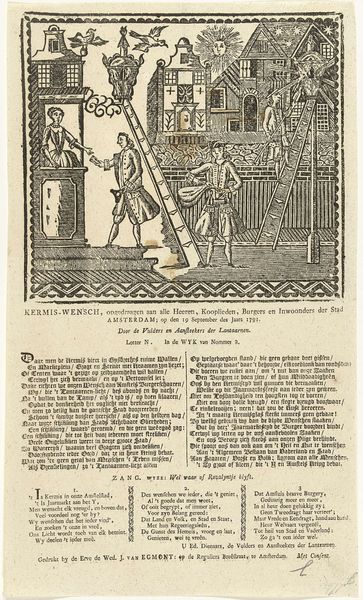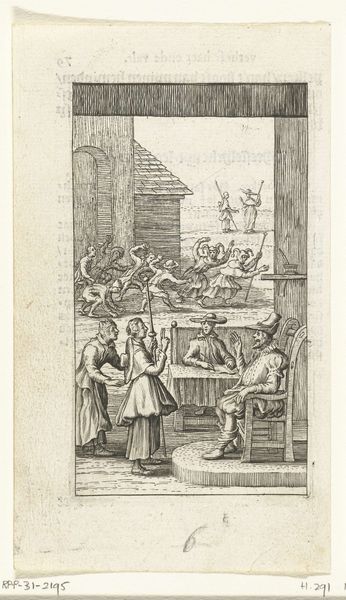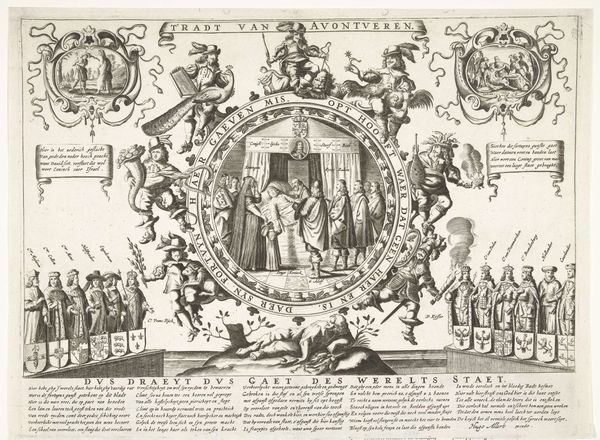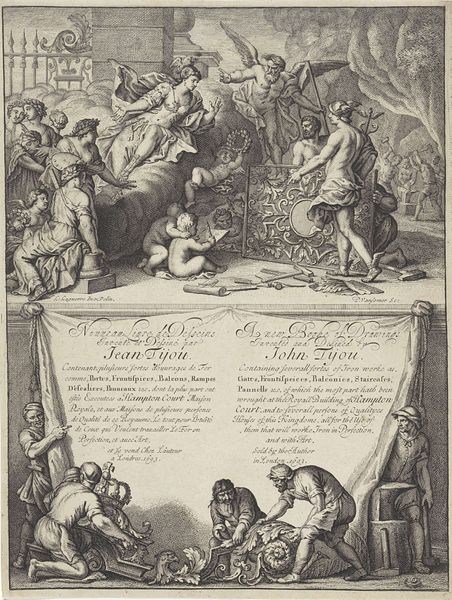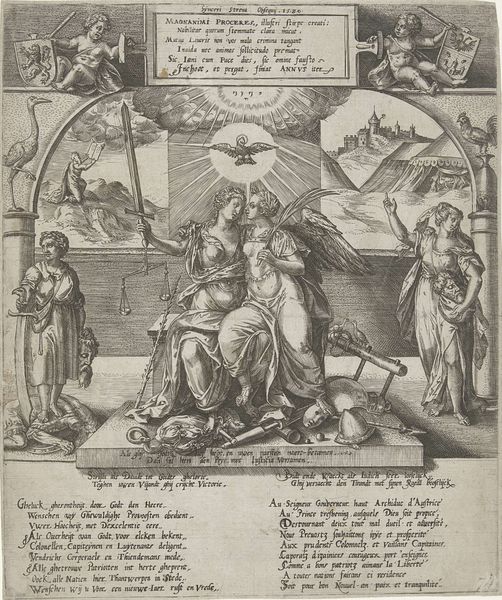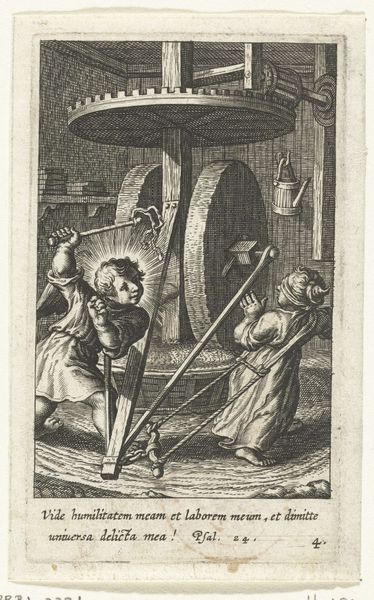
print, textile, engraving
#
baroque
# print
#
textile
#
history-painting
#
engraving
Dimensions: height 236 mm, width 162 mm
Copyright: Rijks Museum: Open Domain
Curator: This engraving, likely produced anonymously in 1673, is titled "Holland in de Franse drukpers, 1672-1673." The Rijksmuseum houses this compelling work. What strikes you first about it? Editor: Utterly disturbing. It's like a grotesque tableau vivant. The figure under the press seems to be both suffering and… yielding? The composition, though formally precise, feels intensely cruel. What is the meaning? Curator: Indeed, it’s a brutal allegory of the Franco-Dutch War. The Dutch Republic is represented by the figure being crushed in a printing press, symbolizing French oppression. The press, prominently topped with the fleur-de-lis, marks its French origin, while soldiers on either side twist the mechanism. Editor: The imagery is… intense. It makes me think about the power of print, literally crushing dissent and extracting something from the Dutch people. I'm struck by the flowing map or textile emerging from the press: this suggests the literal body of the Netherlands, pressed and imprinted upon. Curator: Precisely. And notice the text accompanying the image, written in both French and Dutch, adding layers of satirical commentary and historical context. These prints were often tools of propaganda. The text clearly positions the French as aggressors, intent on stifling Dutch liberty and autonomy. The landscape motif signifies something important here. Editor: I can't shake the disturbing sensation of the soldiers' nonchalance as they torture this body politic, as well as that ambiguous flowing garment. Does it speak to the fluidity of national identity or its capacity to regenerate itself from duress, bearing its burdens on the battlefield? Curator: Perhaps both. It certainly captures the precariousness of the Dutch Republic at the time. What initially reads as stark political commentary unveils the intrinsic psychological dimension. It conveys not merely geopolitical events, but deeply imbues these symbols with enduring weight and pertinence. Editor: Agreed. A deeply unsettling yet strangely powerful piece. It makes you wonder about the relationship between trauma, representation, and resilience and how collective identity arises through moments of brutal struggle and crisis.
Comments
No comments
Be the first to comment and join the conversation on the ultimate creative platform.
